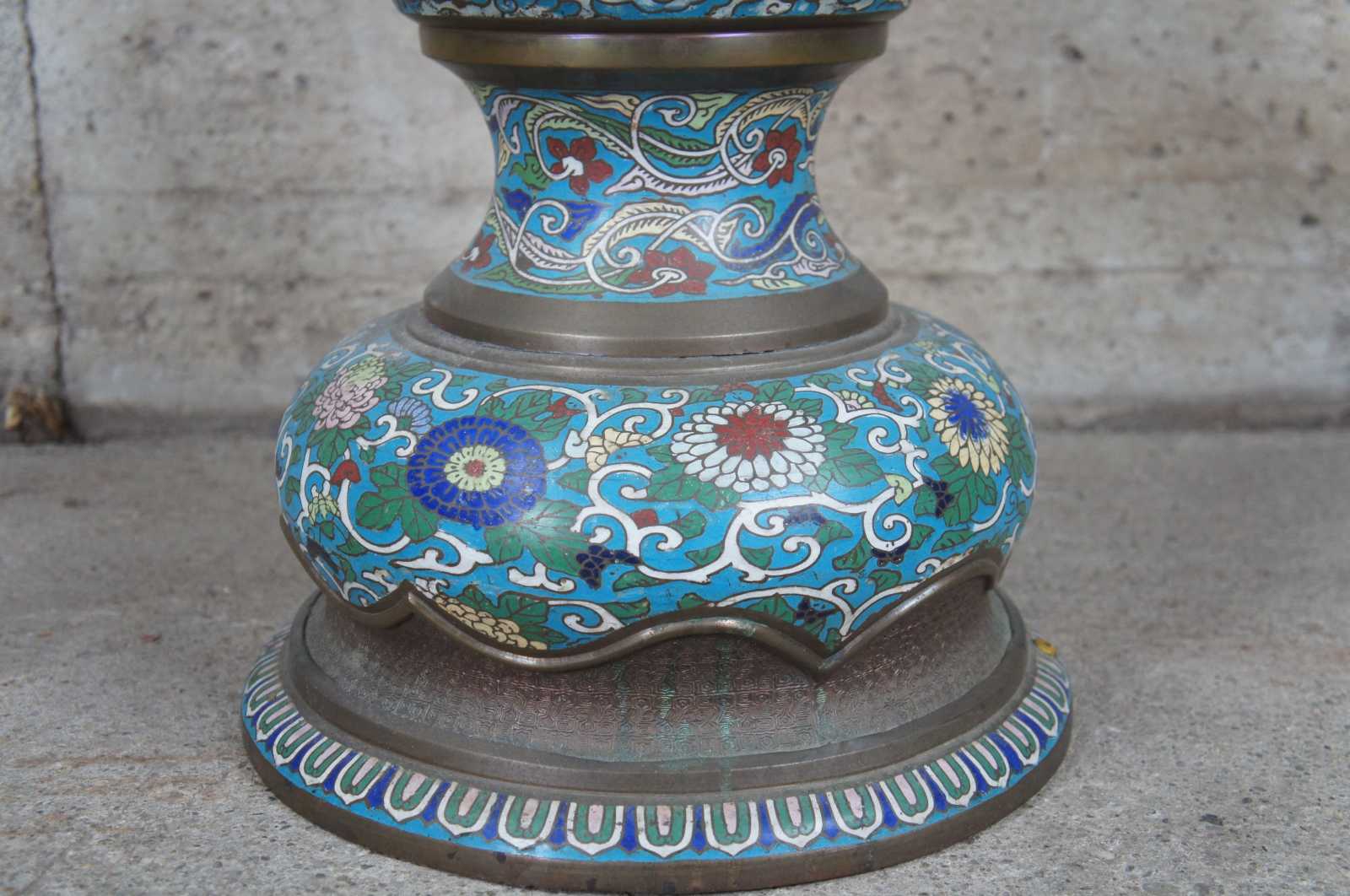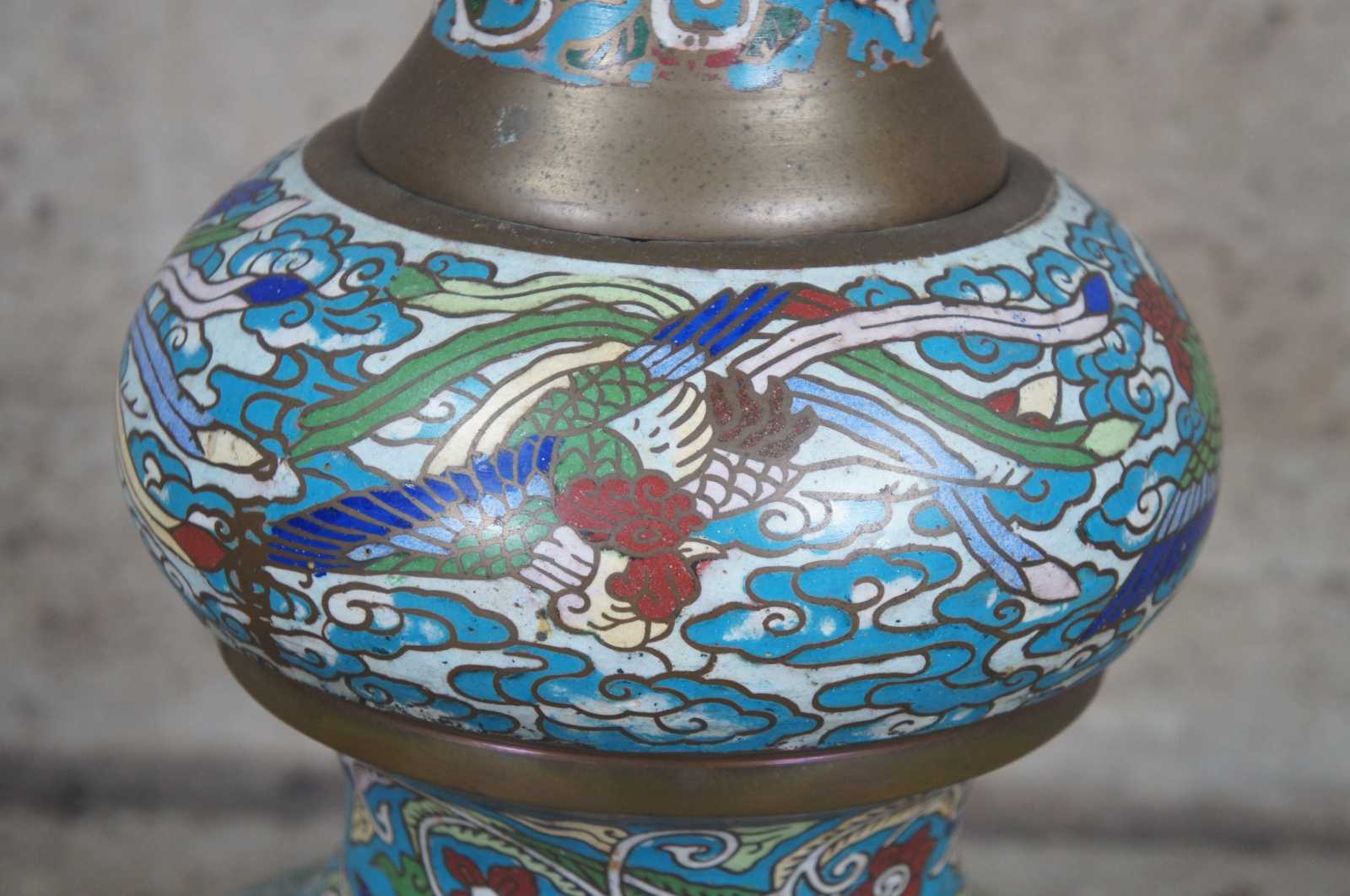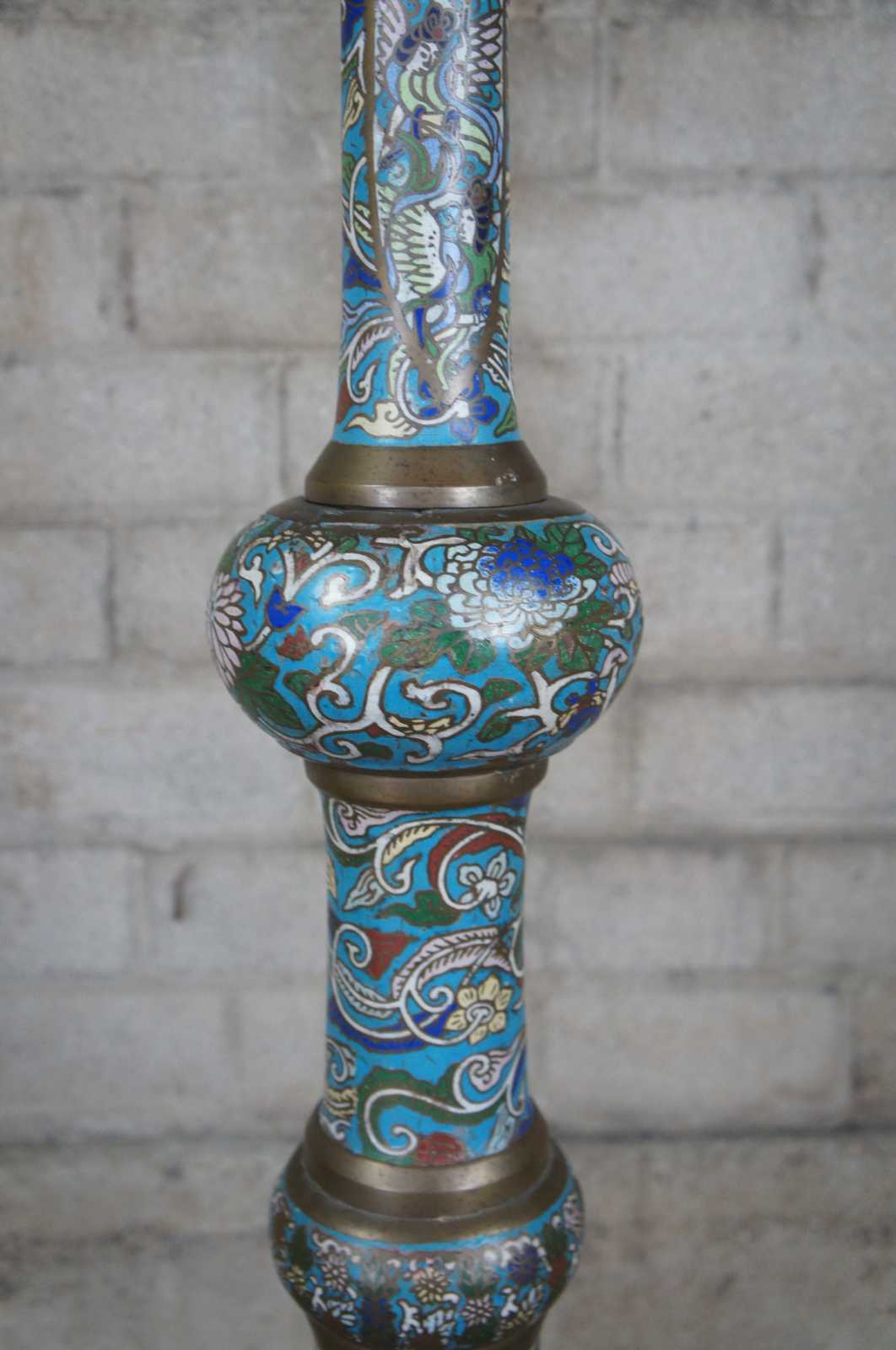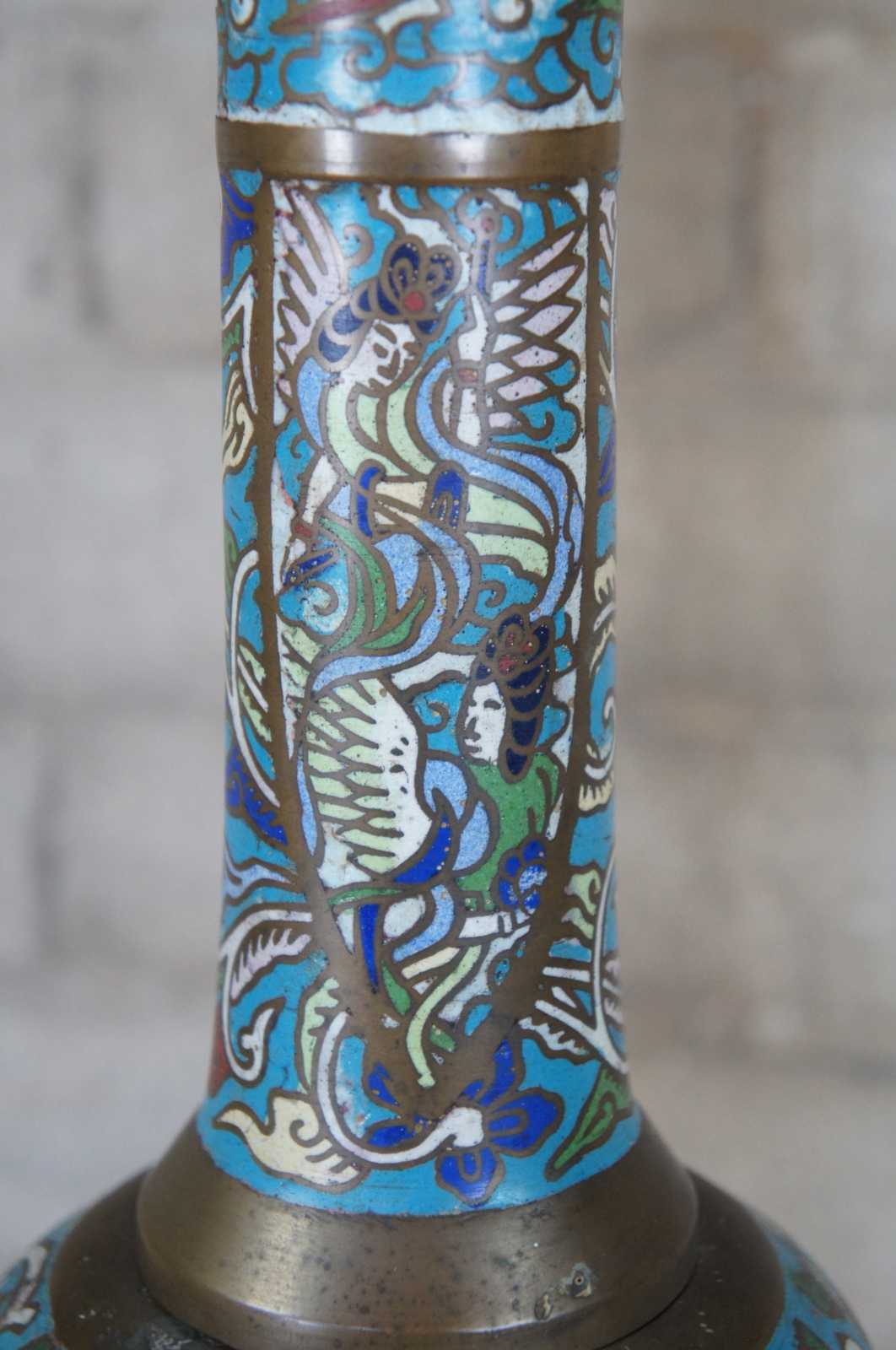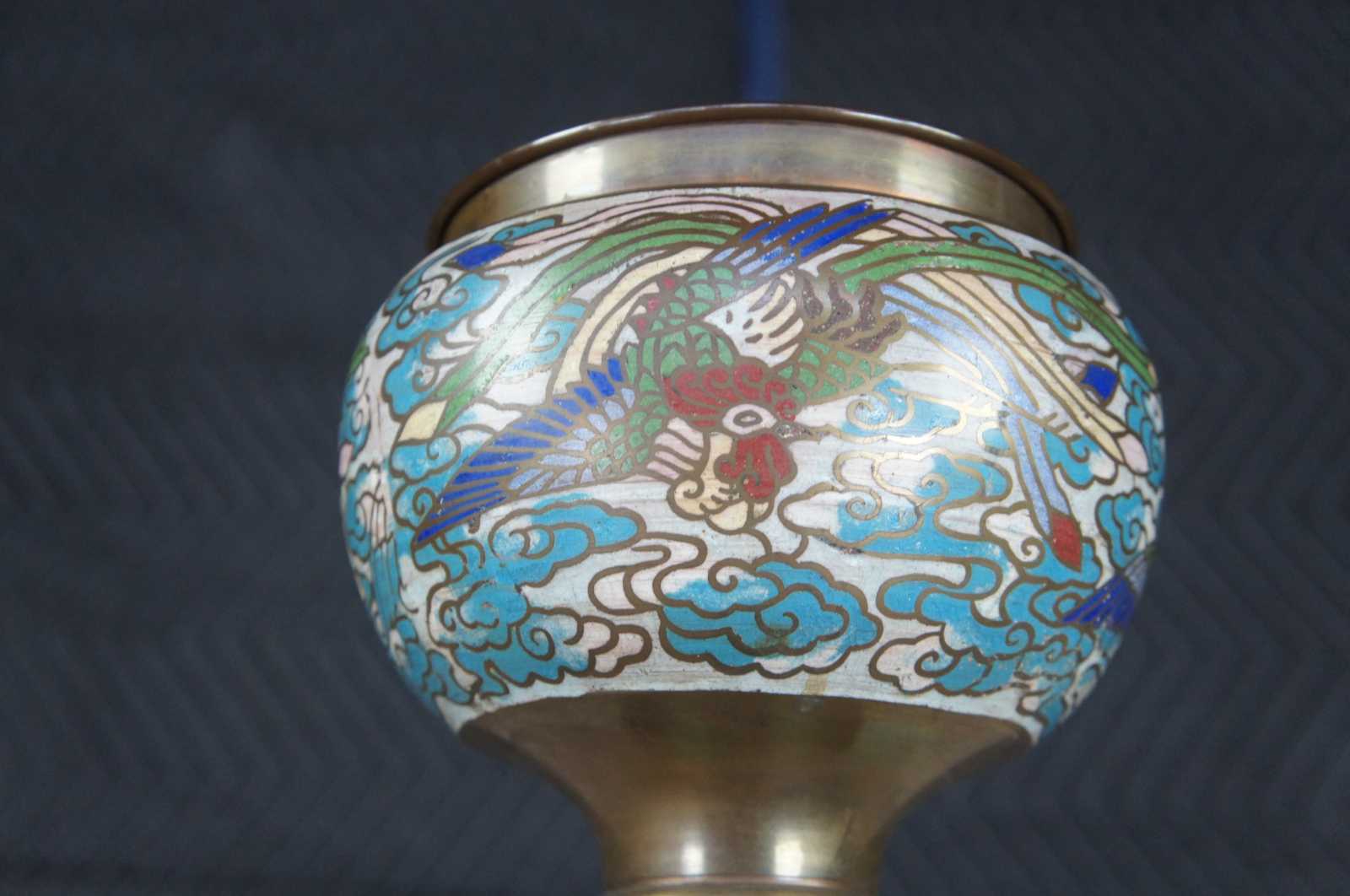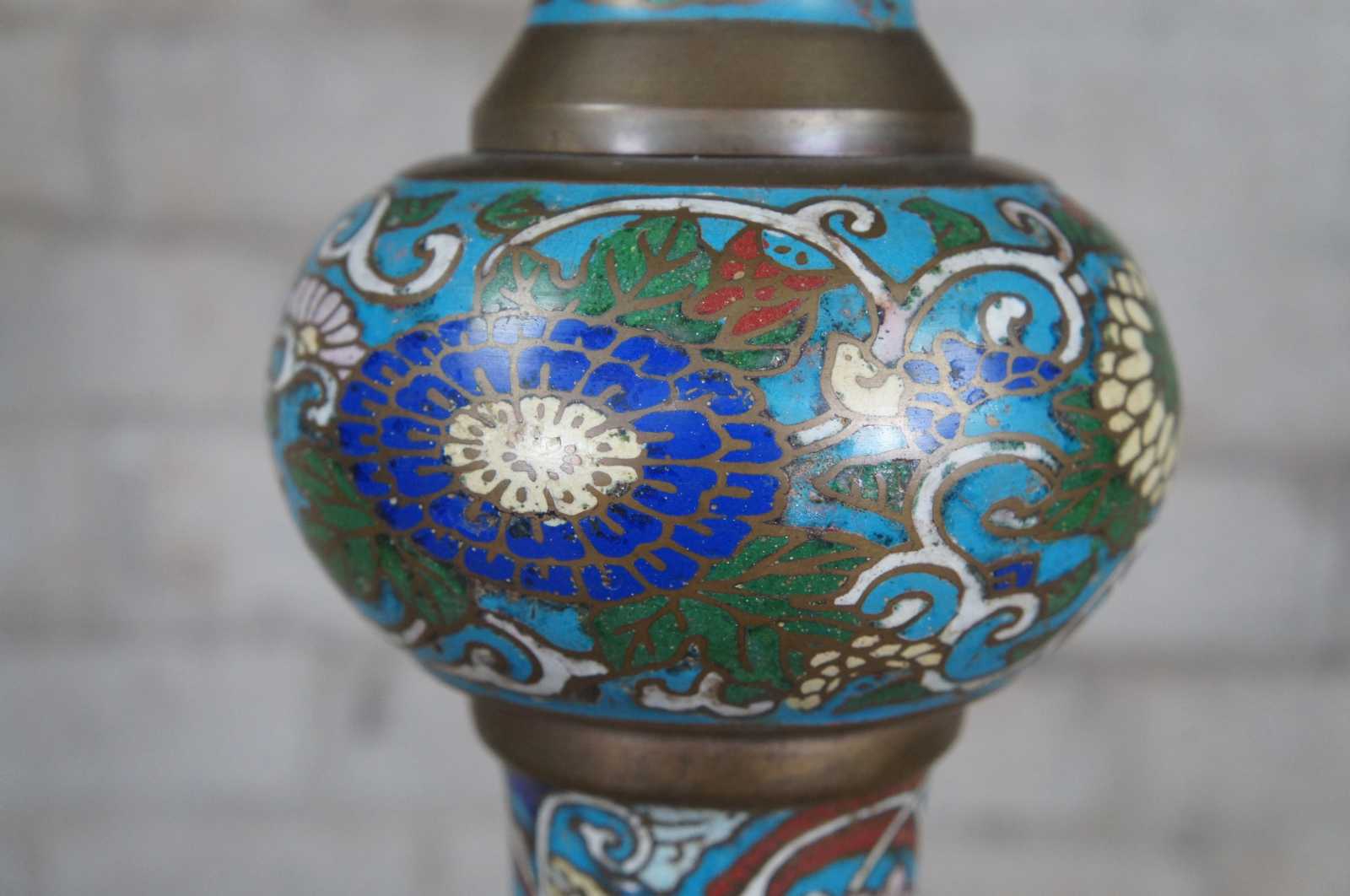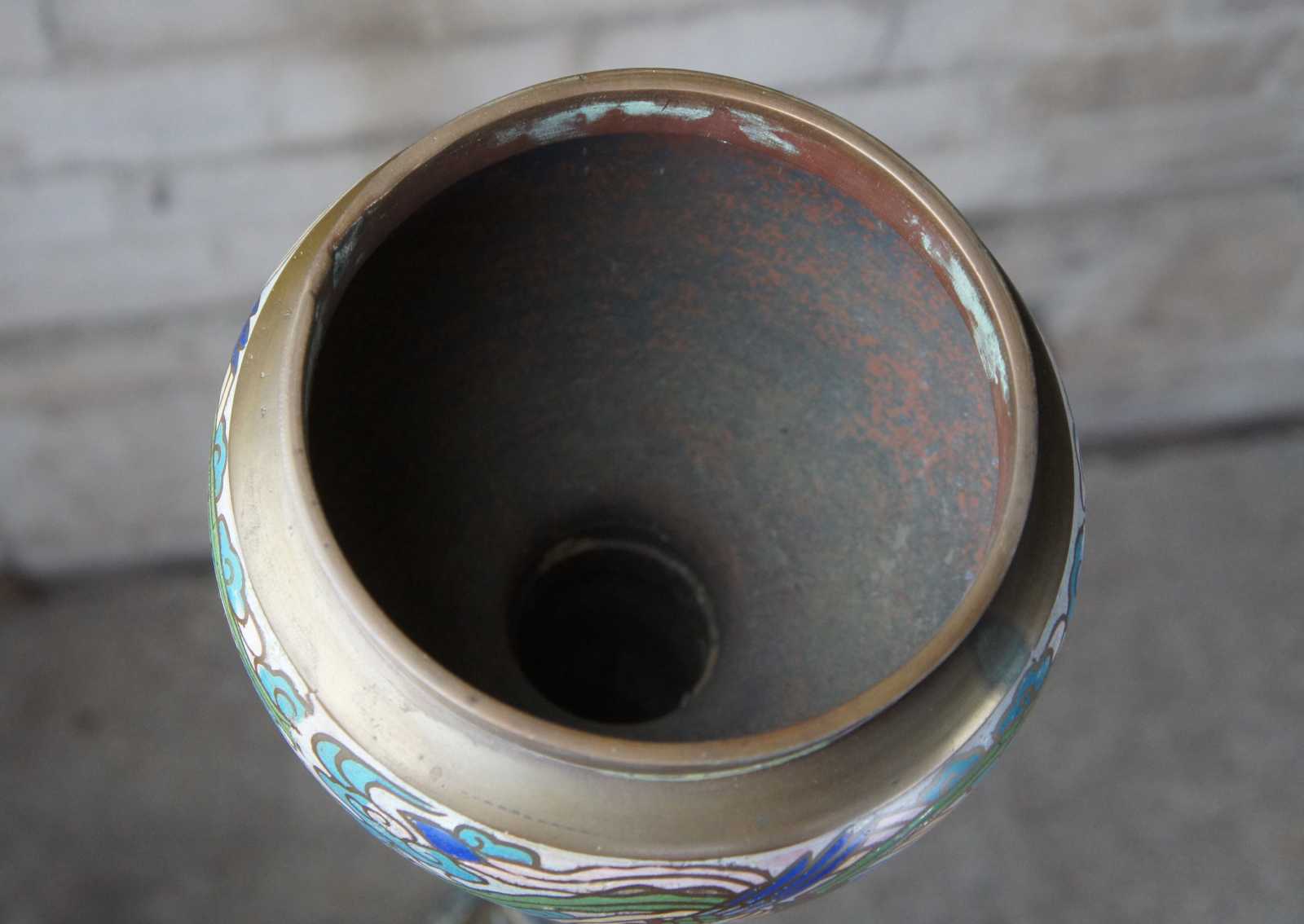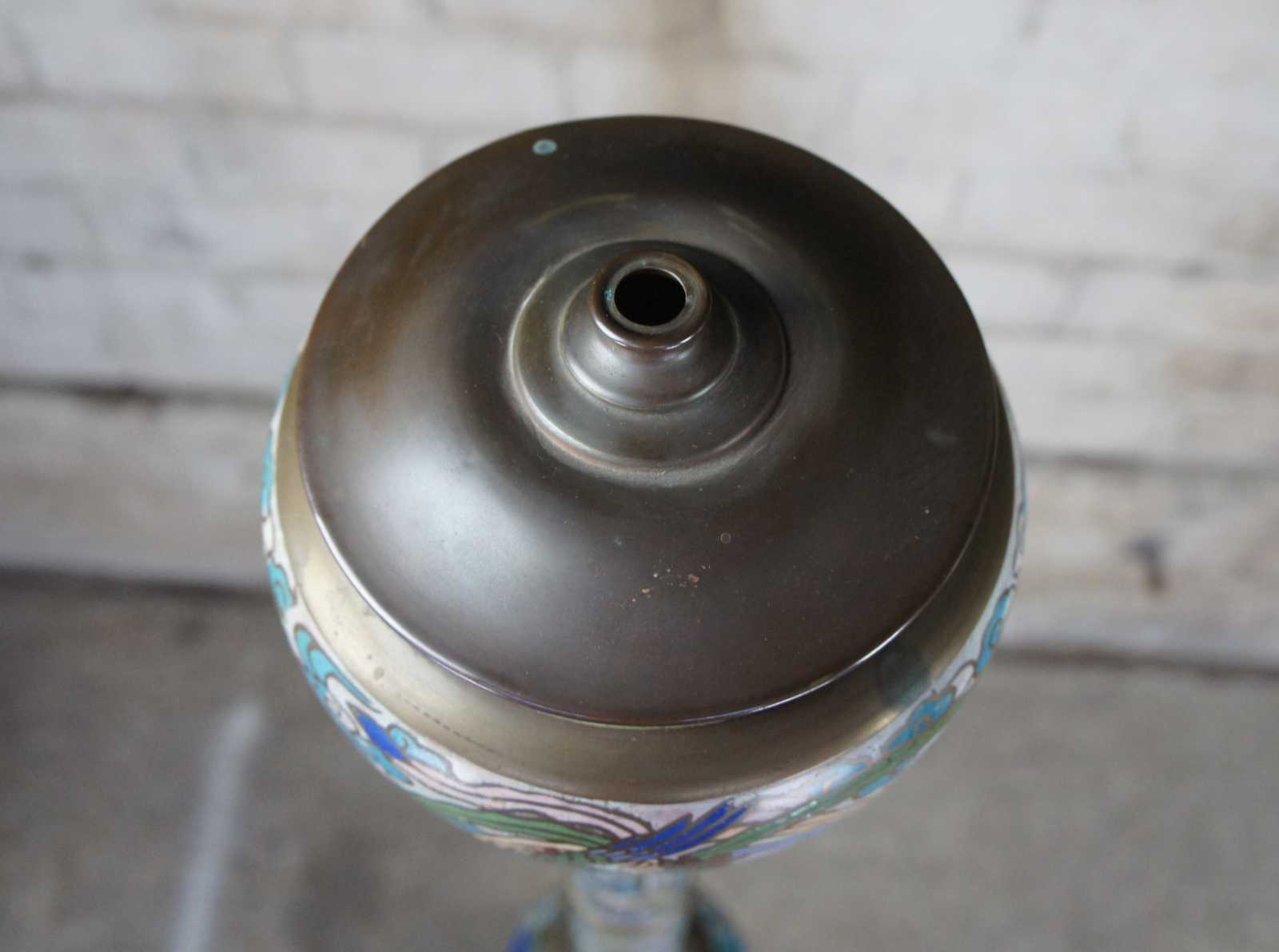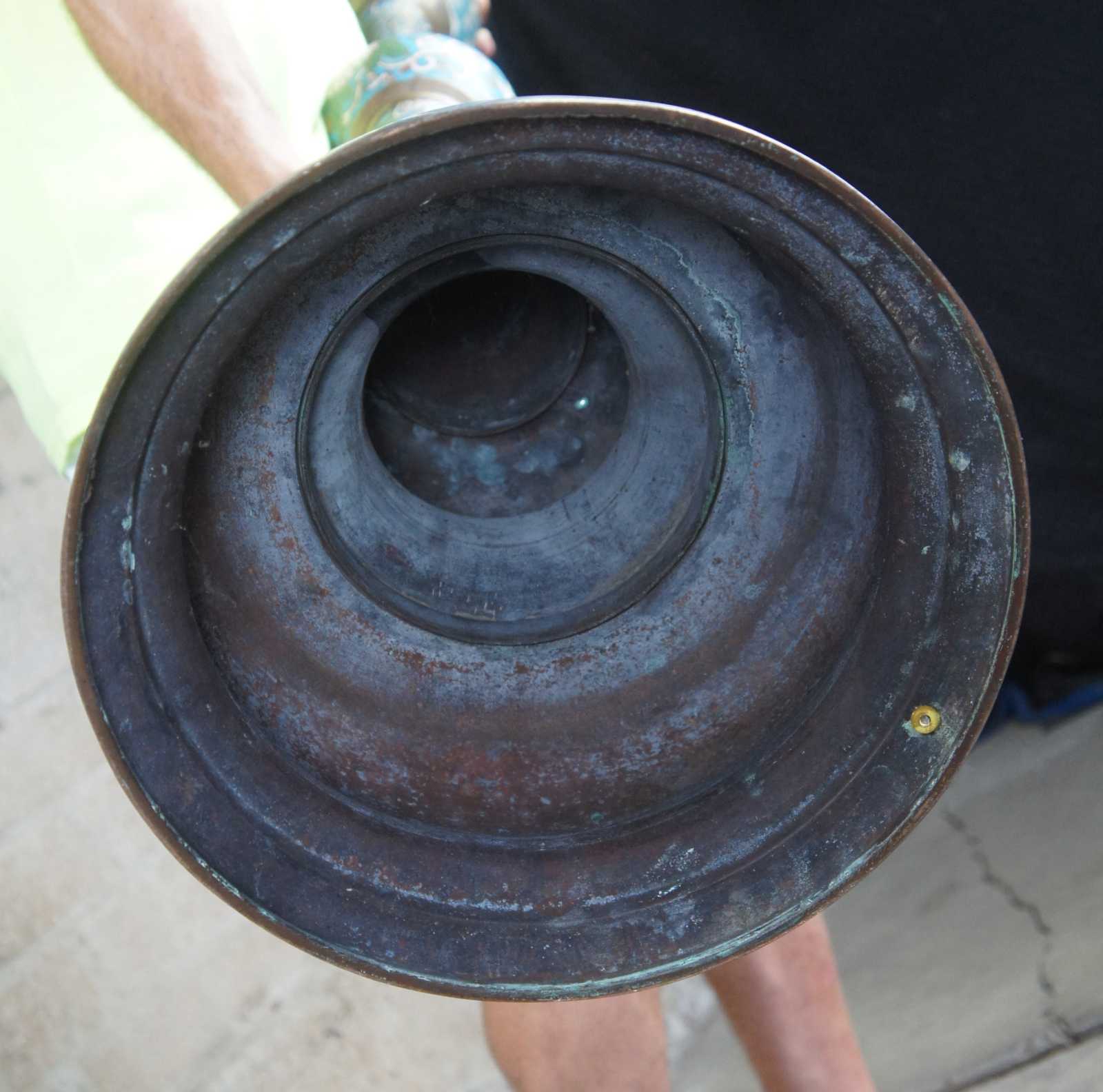
Antique Chinese Cloisonne Champleve Enamel Baluster Temple Floor Oil Lamp 62"
Sold
Shipping:
Free Shipping Included
Delivery:
Estimated 2-15 Business Days
Payments:
Credit Card, Check, Cash, PayPal, Apple Pay, Venmo
Returns:
30 Days 100% Money Back Guarantee, Buyer Pays Return Shipping
Description
Monumental antique cloisonne floor oil lamp featuring champleve enamel design of stylized animals, figures and vined florals against a field of clouds and brass accents.
Champlevé is an enameling technique in the decorative arts, or an object made by that process, in which troughs or cells are carved, etched, die struck, or cast into the surface of a metal object, and filled with vitreous enamel. The piece is then fired until the enamel fuses, and when cooled the surface of the object is polished. The uncarved portions of the original surface remain visible as a frame for the enamel designs; typically they are gilded in medieval work. The name comes from the French for ""raised field"", ""field"" meaning background, though the technique in practice lowers the area to be enameled rather than raising the rest of the surface.
The technique has been used since ancient times, though it is no longer among the most commonly used enameling techniques. Champlevé is suited to the covering of relatively large areas, and to figurative images, although it was first prominently used in Celtic art for geometric designs. In Romanesque art its potential was fully used, decorating caskets, plaques and vessels, in Limoges enamel and that from other centres.
Champlevé is distinguished from the technique of cloisonné enamel in which the troughs are created by soldering flat metal strips to the surface of the object. The difference between the techniques is analogous to the woodworking techniques of intarsia and marquetry. It differs from the basse-taille technique, which succeeded it in the highest quality Gothic work, in that the bottoms of the recesses for the enamel are rough, and so only opaque enamel colours are used. In basse-taille the recesses are modelled, and translucent enamels are used, for more subtle effects, as in the 14th century Parisian Royal Gold Cup.
Condition
Good antique condition, light wear, pitting / oxidation to brass.
Dimensions
61.5" x 14" x 14"


